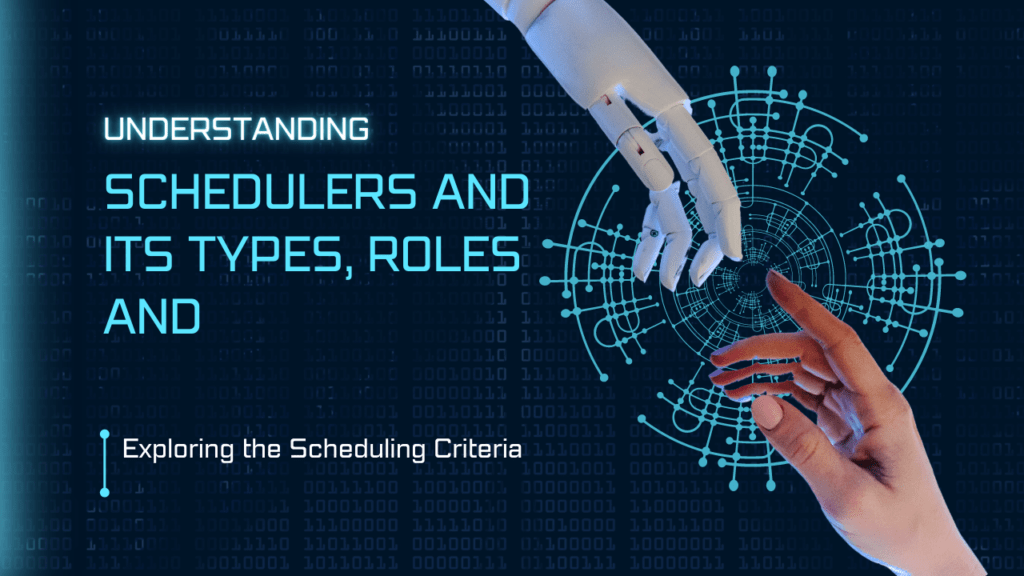Schedulers
In operating systems, schedulers play a crucial role in managing and optimizing the execution of processes. They act as interface between the CPU and the processes, determining which task should run next and for how long. The main objective of schedulers is to enhance system performance by efficiently allocating resources and reducing the waiting time for processes.
The Role of Schedulers
Schedulers are vital components of any operating system and are responsible for the following essential tasks:
Process Management
Schedulers manage the execution of multiple processes, ensuring that each process gets an appropriate amount of CPU time. They prioritize tasks based on their characteristics and requirements.
Resource Allocation
Schedulers allocate system resources to different processes, such as the CPU and memory. They must strike a balance between resource utilization and ensuring fairness among competing processes.
Synchronization
Schedulers handle synchronization issues, preventing conflicts that may arise when multiple processes access shared resources concurrently.
Context Switching
Context switching is the process of saving the state of a running process and restoring the state of another process to execute. Schedulers manage context switches efficiently to minimize overhead.
Types of Schedulers
There are three primary types of schedulers in operating systems:
Long-Term Scheduler (Job Scheduler)
The long-term scheduler is responsible for selecting incoming processes from the pool and admitting them to the ready queue. Its primary focus is on process management and resource allocation. The long-term scheduler determines which processes will be allowed to enter the system and thus significantly impacts overall system performance.
Short-Term Scheduler (CPU Scheduler)
The short-term scheduler selects a process from the ready queue and allocates the CPU to that process. It is responsible for making quick decisions about which process should run next. The short-term scheduler runs frequently to ensure high responsiveness and fairness in executing processes.
Medium-Term Scheduler
The medium-term scheduler plays a role in managing memory. It is responsible for swapping out processes from memory to disk when the system’s memory becomes overburdened. Later, it can bring these processes back into memory when the situation permits. This type of scheduler helps maintain a balance between process execution and memory usage.
Scheduling Criteria
Scheduling algorithms are essential in computer systems and operating environments to manage tasks and resources effectively. To evaluate the performance of these algorithms, several key criteria are used. In this article, we will define and explore the essential scheduling criteria: CPU utilization, throughput, turnaround time, waiting time, and response time.
CPU Utilization
CPU utilization is a measure of how much of the CPU’s processing power is being utilized at any given time. It indicates the percentage of time the CPU spends executing tasks or processes. High CPU utilization signifies efficient usage of the CPU, ensuring that it is not idle for extended periods, leading to improved system performance.
Throughput
Throughput refers to the number of tasks or processes that are completed in a given time interval. It represents the system’s processing capacity and indicates how efficiently tasks are being executed. High throughput signifies that the system can handle a significant number of tasks, resulting in increased productivity.
Turnaround Time
Turnaround time is the time taken from the submission of a task to its completion. It includes the time a task spends waiting in the queue and the actual execution time on the CPU. Short turnaround time indicates that tasks are being processed promptly, leading to quicker task completion and improved system responsiveness.
Waiting Time
Waiting time is the amount of time a task spends in the ready queue, waiting for CPU execution. It is a crucial factor in evaluating scheduling efficiency, as longer waiting times can lead to reduced system performance and increased response time for users.
Response Time
Response time is the time taken for a system to respond to a user’s request or input. It is the time from when a user initiates a task until the system begins processing it. Low response time is desirable as it provides users with a more interactive and responsive experience.
Conclusion
Schedulers are integral to the smooth functioning of operating systems. They manage processes, allocate resources, and ensure optimal system performance. Long-term schedulers admit processes to the system, short-term schedulers determine which process runs next, and medium-term schedulers handle memory management. Various scheduling algorithms further refine the execution order of processes. By understanding the role and types of schedulers, we gain insights into how modern operating systems achieve efficient multitasking and resource management.
F.A.Q.s
What is the main role of a scheduler in an operating system
The main role of a scheduler in an operating system is to manage the execution of processes, allocate resources, and ensure fairness among competing tasks.
What is the difference between a long-term scheduler and a short-term scheduler?
The long-term scheduler admits processes to the system, while the short-term scheduler selects which process runs next on the CPU.
Which scheduling algorithm aims to minimize average waiting time?
The Shortest Job Next (SJN) scheduling algorithm aims to minimize average waiting time by prioritizing processes with the shortest execution time.
How does priority-based scheduling work?
Priority-based scheduling assigns priorities to processes, and the CPU executes the process with the highest priority first.
What is the purpose of context switching in the scheduling process?
Context switching allows the operating system to save the state of a running process and restore the state of another process to execute, enabling multitasking and fair CPU time allocation.



